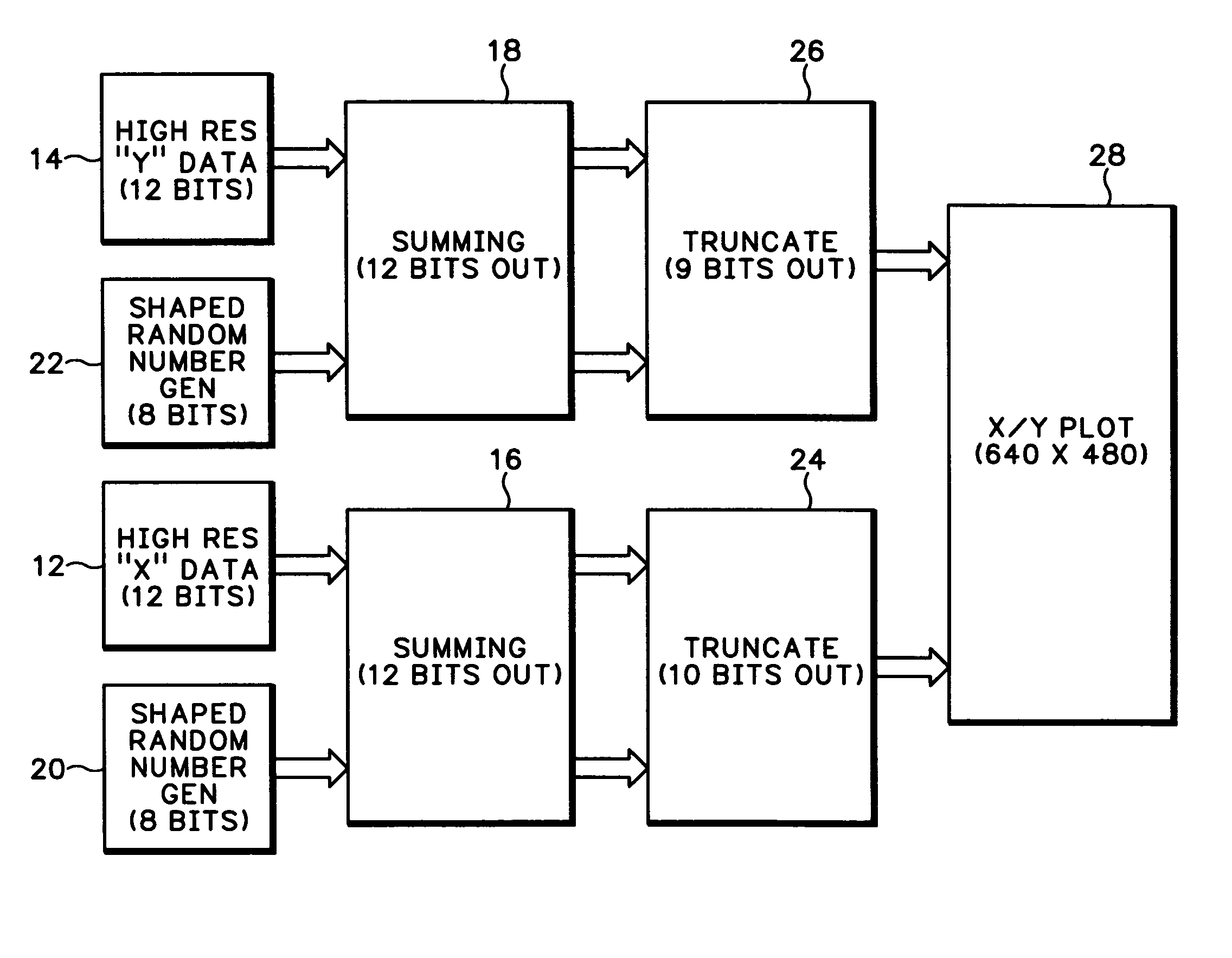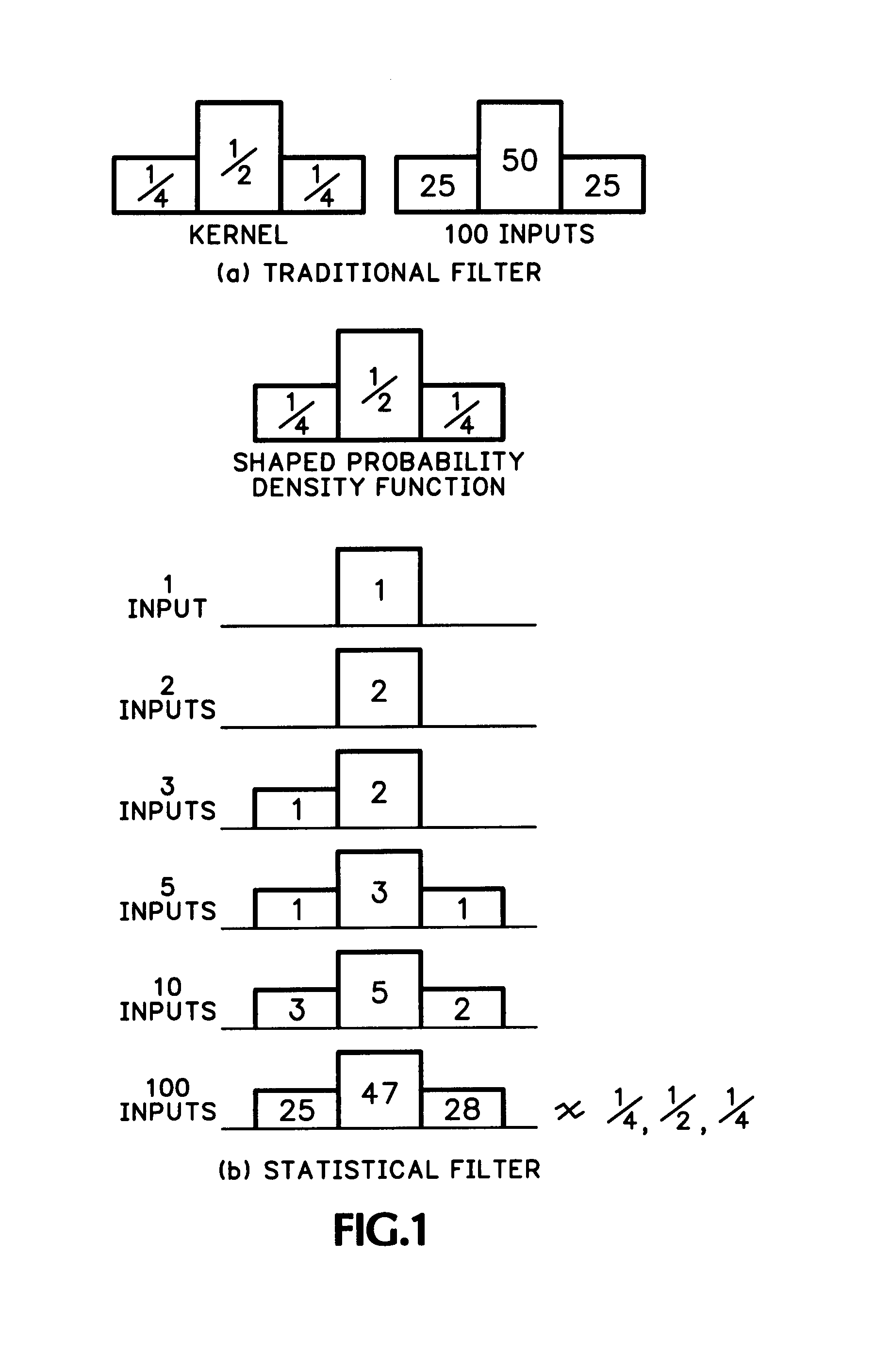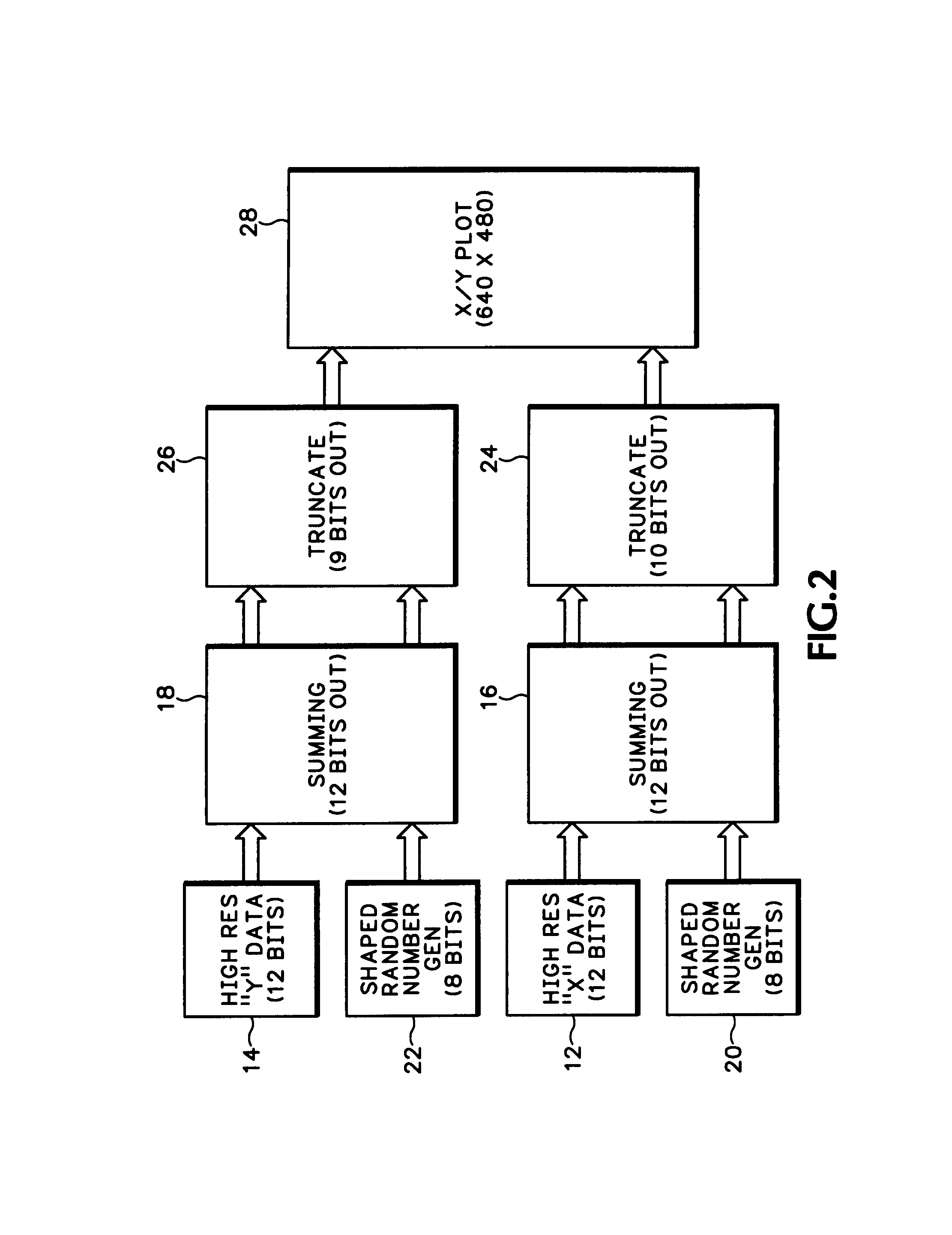Image alias rejection using shaped statistical filtering
a statistical filtering and image alias technology, applied in the field of video processing, can solve the problems of high resolution image, large raster memory, and sometimes called “jaggies” and achieve the effect of high resolution memory
- Summary
- Abstract
- Description
- Claims
- Application Information
AI Technical Summary
Benefits of technology
Problems solved by technology
Method used
Image
Examples
Embodiment Construction
[0011]The present invention addresses the image alias rejection problem by filtering with a shaped statistical filter. A simple one-dimensional example is shown in FIG. 1. For a traditional filter implementing a low pass filter for spreading an impulse over several bins, the impulse is passed through a kernel (FIG. 1a) with coefficients of ¼, ½ and ¼ in this example. The coefficients are multiplied by the impulse to provide an output. On the other hand a statistical filter has a random shaped function representing a probability density function for the impulse response of the filter being implemented. In this example (FIG. 1b) the statistical filter puts whatever input is provided in the first bin one-fourth of the time, in the second bin one-half of the time and in the third bin one-fourth of the time. If the impulse is put into the statistical filter many, many times, as is common for portions of a video signal such as sync, color burst, test patterns, etc., the output is approxim...
PUM
 Login to View More
Login to View More Abstract
Description
Claims
Application Information
 Login to View More
Login to View More - R&D
- Intellectual Property
- Life Sciences
- Materials
- Tech Scout
- Unparalleled Data Quality
- Higher Quality Content
- 60% Fewer Hallucinations
Browse by: Latest US Patents, China's latest patents, Technical Efficacy Thesaurus, Application Domain, Technology Topic, Popular Technical Reports.
© 2025 PatSnap. All rights reserved.Legal|Privacy policy|Modern Slavery Act Transparency Statement|Sitemap|About US| Contact US: help@patsnap.com



